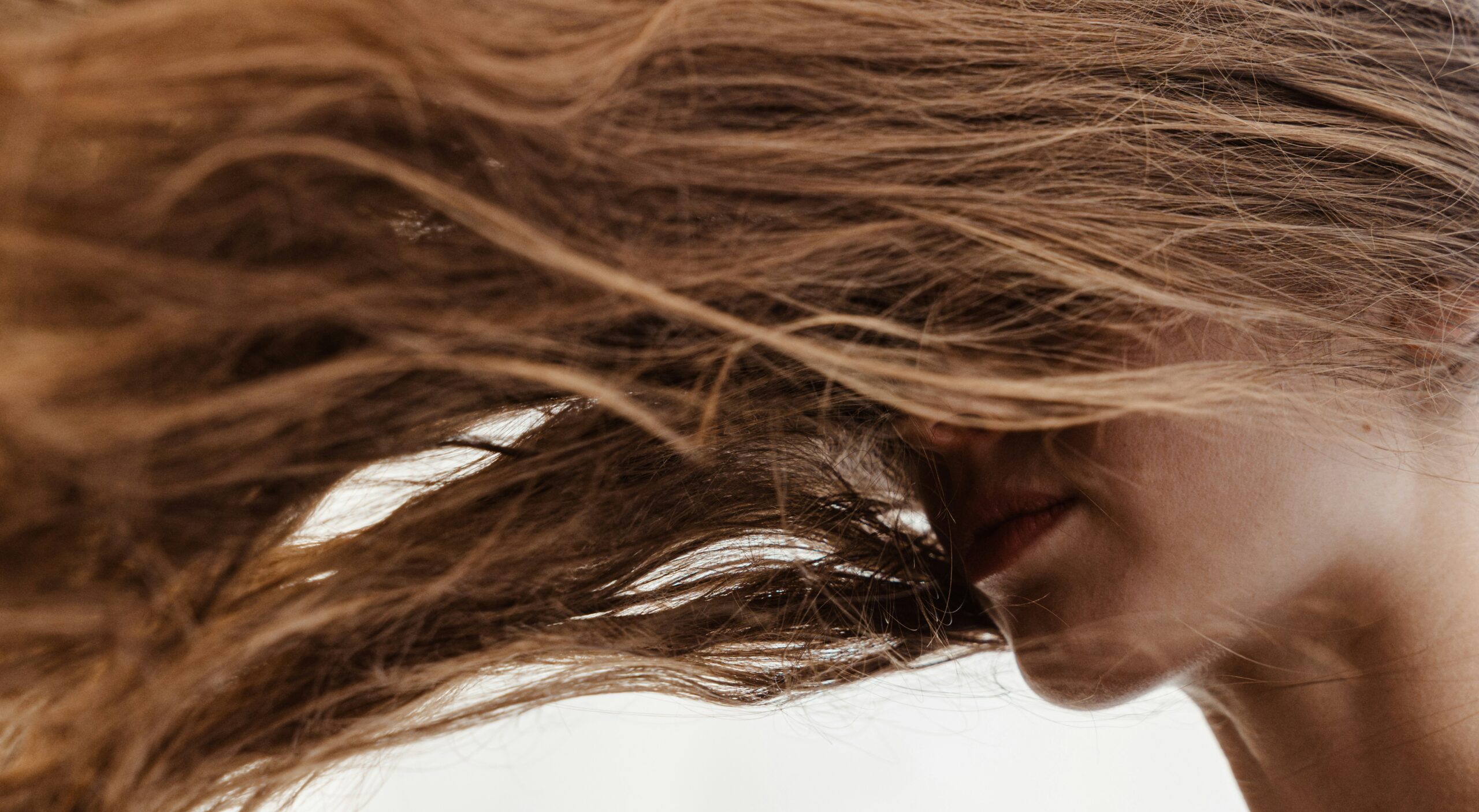Heat styling tools have become essential in our daily routines, yet they’re silently destroying our hair’s natural structure. Millions of women face the frustrating reality of brittle, lifeless strands that break at the slightest touch.
Research reveals that temperatures above 300°F permanently alter hair’s protein structure, leading to irreversible damage. However, cutting isn’t your only option. Advanced scientific methods can restore your hair’s health and vitality.
Understanding the mechanisms behind thermal damage empowers you to make informed recovery choices. Modern hair science offers targeted solutions that address each layer of damage systematically.
Understanding Heat Damage at the Molecular Level
Heat styling fundamentally changes hair’s internal structure. When temperatures exceed safe limits, the hair cuticle cracks open, exposing the delicate cortex underneath. This process creates a cascade of damage that affects every aspect of hair health.
Protein bonds within the hair shaft begin breaking down at high temperatures. Keratin, the primary structural protein, becomes denatured and loses its ability to maintain hair strength. Additionally, moisture escapes through damaged cuticles, leaving strands dry and brittle.
Furthermore, repeated heat exposure creates cumulative damage that worsens over time. Each styling session compounds existing problems, creating a cycle of deterioration that requires immediate intervention.
7 Science-Backed Methods for Heat Damaged Hair Recovery
1. Protein Reconstruction Therapy
Damaged hair requires immediate protein replenishment to rebuild its structural integrity. Clinical studies show that hydrolyzed protein treatments can restore up to 60% of lost hair strength within four weeks.
Look for treatments containing keratin, silk proteins, or amino acid complexes. These smaller molecules penetrate the hair shaft more effectively than larger proteins. Apply treatments weekly for the first month, then reduce frequency as hair improves.
Professional protein treatments offer stronger concentrations than at-home options. However, over-processing with protein can create additional brittleness, so balance is crucial.
2. Deep Moisture Restoration
Heat damage severely compromises hair’s moisture retention capabilities. Intensive hydration treatments help seal the cuticle and restore flexibility to damaged strands.
Ceramides and hyaluronic acid are particularly effective for moisture restoration. These ingredients mimic hair’s natural lipid structure, filling gaps in the cuticle layer. Apply moisture treatments 2-3 times weekly, focusing on mid-lengths and ends.
Steam treatments enhance moisture penetration by opening the hair cuticle temporarily. Use a hair steamer or create steam with hot towels during treatment application.
3. Bond Rebuilding Technology
Modern hair science has developed specific ingredients that rebuild broken disulfide bonds within the hair shaft. These treatments work at the molecular level to restore hair’s internal structure.
Maleic acid and bis-aminopropyl diglycol dimaleate are proven bond-rebuilding ingredients. They form new cross-links between protein chains, effectively repairing damage from within.
Professional bond treatments show remarkable results after just one application. However, at-home versions require consistent use over several weeks to achieve similar outcomes.
4. Scalp Circulation Enhancement
Healthy hair growth begins with optimal scalp circulation. Heat damage often occurs alongside poor scalp health, creating a double burden on hair recovery.
Massage techniques increase blood flow to hair follicles, delivering essential nutrients for repair. Use circular motions with moderate pressure for 5-10 minutes daily. Essential oils like rosemary or peppermint can enhance circulation benefits.
Scalp serums containing caffeine or niacinamide provide additional circulation benefits. These ingredients dilate blood vessels, improving nutrient delivery to hair follicles.
5. Thermal Protection Barrier Creation
Preventing further damage is crucial during the recovery process. Advanced heat protectants create a sacrificial barrier that absorbs thermal damage instead of your hair.
Silicones like cyclopentasiloxane form protective films on hair surfaces. These create a barrier that reduces direct heat contact while maintaining styling capabilities. Apply protectants to damp hair before any heat styling.
Newer formulations include heat-activated ingredients that provide stronger protection at higher temperatures. These products adapt their protective properties based on styling tool temperatures.
6. Cuticle Smoothing Treatments
Damaged cuticles create rough, tangled hair that breaks easily. Smoothing treatments help flatten raised cuticles, reducing friction and breakage.
Acidic treatments with pH levels between 4.5-5.5 help close lifted cuticles. Apple cider vinegar rinses or citric acid treatments provide gentle cuticle smoothing. Use these treatments weekly to maintain cuticle health.
Professional gloss treatments offer longer-lasting cuticle smoothing. These semi-permanent treatments coat the hair shaft, providing weeks of improved manageability.
7. Strategic Trimming Schedule
While not all damaged hair requires cutting, strategic trimming prevents split ends from traveling up the hair shaft. Regular maintenance trims preserve length while removing the most damaged portions.
Trim every 6-8 weeks during the recovery process. Focus on removing visible split ends and severely damaged areas. This approach maintains length while preventing further deterioration.
Dusting techniques remove minimal length while targeting damaged ends specifically. This method works particularly well for those trying to maintain length during recovery.
Creating Your Personalized Recovery Timeline
Recovery timelines vary based on damage severity and hair type. Mild heat damage may improve within 4-6 weeks, while severe damage requires 3-6 months of consistent treatment.
Week 1-2: Focus on protein reconstruction and intensive moisture treatments. Use treatments 2-3 times weekly during this critical phase.
Week 3-8: Gradually reduce treatment frequency while maintaining consistency. Introduce bond-rebuilding treatments if damage is severe.
Month 2-6: Maintenance phase with weekly treatments and consistent protective practices. Monitor progress and adjust routines as needed.
Lifestyle Changes That Accelerate Recovery
Nutrition plays a crucial role in hair recovery. Protein-rich foods provide building blocks for hair repair, while vitamins C and E support healthy hair growth.
Sleep quality affects hormone production that influences hair health. Aim for 7-9 hours of quality sleep nightly to support natural repair processes.
Stress management reduces cortisol levels that can impair hair growth and recovery. Incorporate stress-reduction techniques like meditation or yoga into your routine.
Professional vs. At-Home Treatment Options
Professional treatments offer higher concentrations of active ingredients and immediate results. However, they require ongoing investment and regular salon visits.
At-home treatments provide convenience and cost-effectiveness but require consistent application for results. Many professional-grade ingredients are now available in retail formulations.
Combination approaches often work best, using professional treatments for intensive repair and at-home maintenance for ongoing health.
Monitoring Your Recovery Progress
Track your hair’s improvement using specific metrics rather than subjective assessments. Measure breakage rates, elasticity, and shine levels weekly.
Photography helps document visual improvements over time. Take consistent photos in the same lighting conditions to track progress accurately.
Hair porosity tests reveal internal improvements that may not be immediately visible. These tests help adjust treatment routines based on your hair’s changing needs.
Start Your Heat Damaged Hair Recovery Today
Recovery from heat damage requires patience, consistency, and the right approach. These seven science-backed methods provide a comprehensive framework for restoring your hair’s health and vitality.
Remember that prevention remains your best defense against future damage. Implement protective practices alongside recovery treatments to maintain your progress long-term.
Your hair’s transformation journey begins with the first treatment. Choose the methods that best suit your damage level and lifestyle, then commit to consistent application for optimal results!

Hi! I’m Katia Luján, an SEO and Content Marketing expert with over 10 years of experience helping websites grow organically and get approved by Google AdSense.
I’ve worked in Google’s Trust & Safety team for AdSense and have helped more than 100 websites comply with monetization policies. Currently, I’m the strategist behind Buzzlix—creating SEO-optimized, high-quality content on beauty, skincare, and self-care.
I’m passionate about empowering others with actionable, sustainable, and accessible beauty content.


Leave a Reply